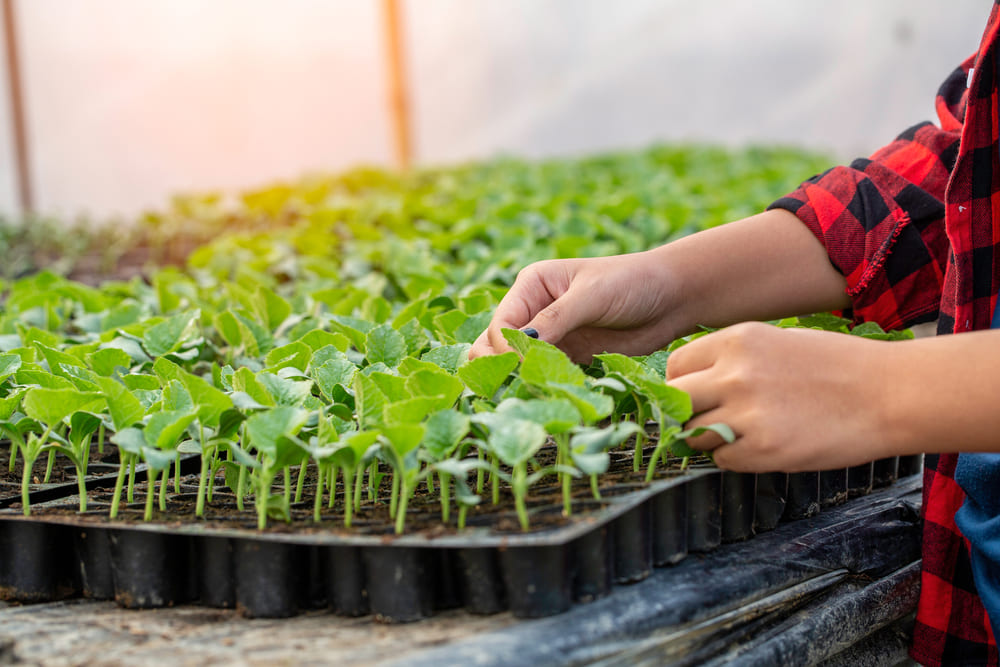If you’ve been growing hydroponic plants, you may have found yourself wondering if you can transplant them into soil. The answer is yes! Transplanting hydroponic plants into soil is a great way to expand your plant growth, and enjoy the benefits of soil transplantation.
Why Transplant Hydroponic Plants into Soil?

Benefits of Soil Transplantation
There are many benefits to transplanting hydroponic plants into soil. One advantage is that the soil will provide the plants with more nutrients compared to what is available in hydroponics.
Plants grown in soil typically have larger root systems, so when you transplant a hydroponic plant into soil, it will cause the plant’s roots to expand and grow stronger.
Another benefit of transplanting hydroponic plants into soil is that it will give you the ability to grow outdoors, which is not possible with a hydroponic system.
Gardening is a great way to get sunlight and breathe fresh air, and you can only do this by transplanting your hydroponic plants into soil.
When to Transplant
You’ll want to transplant your hydroponic plants after they have grown large enough, and their root systems have outgrown their pot.
It’s always best to transplant hydroponic plants when they are seedlings as they are easier to manage at this stage.
Consequences of Postponing the Transplant
Postponing the transplant of your hydroponic plants into soil can cause some issues.
Not only can it cause your plants to wilt and grow incorrectly, but it can also lead to transplant shock when you do finally move them to soil.
Step-by-Step Guide to Transplanting Hydroponic Plants to Soil
Preparing the Soil
Before you begin, you will want to make sure you have a high-quality potting mix.
The center of the pot should be a mix of 50% soil and 50% growing medium. Mix both materials well and add water to the soil until it is thoroughly moistened.
Prepping the Hydroponic Plants
When preparing your hydroponic plants, be sure to remove them from their hydroponic garden and rinse their roots with water.
Gently untangle any roots that may have tangled while growing, and make sure the root system is healthy and not damaged in any way.
Planting
Once you have your soil mix and your hydroponic plant ready, it’s time to plant! Dig a hole in the center of the pot, and gently place the plant in the hole.
Cover the plant’s roots with soil and use your fingers to pat down the soil lightly. Water the plant thoroughly and make sure the soil is moist.
Your plant’s roots will now have the opportunity to expand and grow deeper into the soil.
Common Problems During the Transplant Process
Transplant Shock
Transplant shock can occur when your hydroponic plant is moved from the hydroponic system to soil. The plant may initially wilt, but rest assured, this is normal.
Your plant is simply adjusting to the soil, and it will take time for it to regain its strength. During this process, it’s best to water the plant regularly and avoid moving it.
Adjusting to Soil
After the transplant process, it’s important to monitor your plant as it adjusts to its new environment.
Keep an eye on the soil and water the plant whenever it appears dry. Be careful not to overwater it as this can cause root rot.
Moving Plants from Hydroponics to Soil
Moving plants from hydroponics to soil requires care and attention.
Hydroponic plants are accustomed to getting nutrients delivered directly to their roots quickly and easily, so the process of adjusting to soil may take time.
How to Take Cuttings from Hydroponic Plants
What are Cuttings?
Cuttings are small pieces of a plant stem that can be used to grow new plants. Cuttings are often used by growers who want to make a copy of their plant without having to grow from seeds.
Why Take Cuttings?
Taking cuttings from your hydroponic plants can be beneficial if you want to create clones of your plants or grow another batch of plants quickly.
How to Take Cuttings from Hydroponic Plants
To take cuttings, select a healthy branch from your hydroponic plant. Cut the branch diagonally using a sharp, sterile knife or scissors.
Remove the leaves from the bottom third of the stem and place it in a container of water. Give your plant cutting plenty of light and time to grow roots.
Once the cutting’s roots are about an inch long, you can transplant it into soil.
Transplanting Clones from Hydroponic to Soil
What are Clones?
Clones are plants that are genetically identical to their parent plant.
Clones can be created by placing cuttings from the parent plant into a hydroponic system or growing them in soil.
How to Transplant Clones from Hydroponic to Soil
To transplant clones from hydroponic to soil, start by following the same steps used to transplant hydroponic plants into soil as discussed earlier.
When you have a healthy clone, place it into soil and give it plenty of light, moisture, and nutrients.
Care and Maintenance of Clones in Soil
Make sure your soil mix is moist and well-drained to prevent your clones from becoming waterlogged. Keep an eye on the health of your clones and water them regularly.
Once your clones start to grow and mature, you will have new plants that are genetically identical to their parent plant.
Transplanting hydroponic plants to soil can open up a world of possibilities for indoor and outdoor gardening.
Whether you are a seasoned grower or just starting, the benefits of hydroponics to soil transplantation can help you create a healthy and thriving garden.
